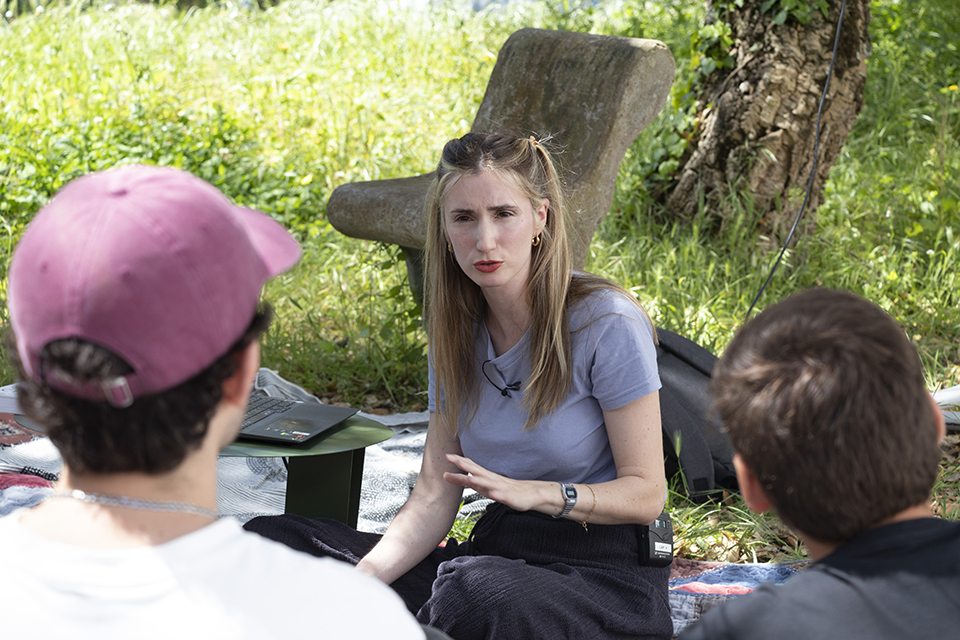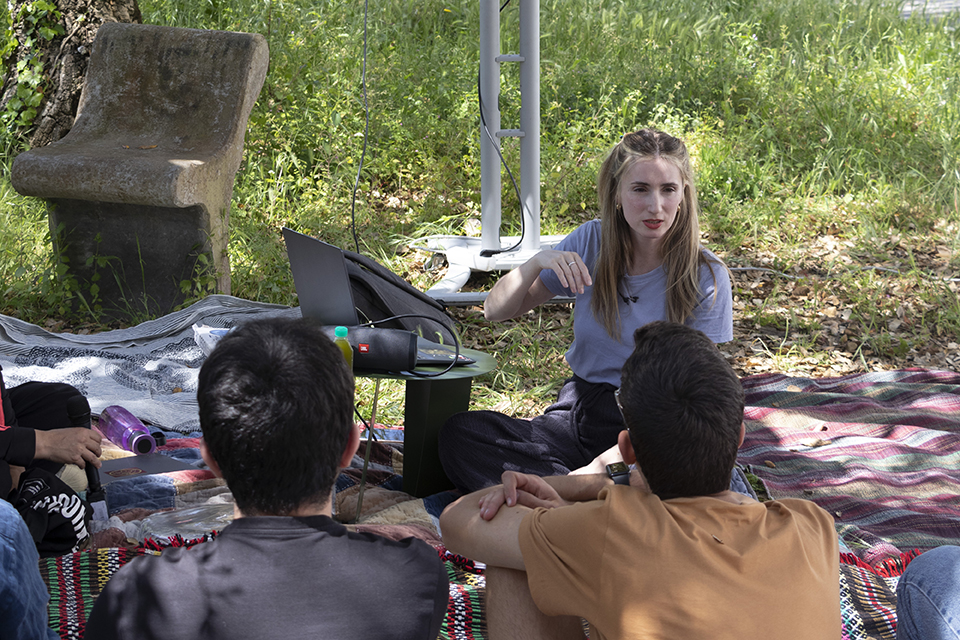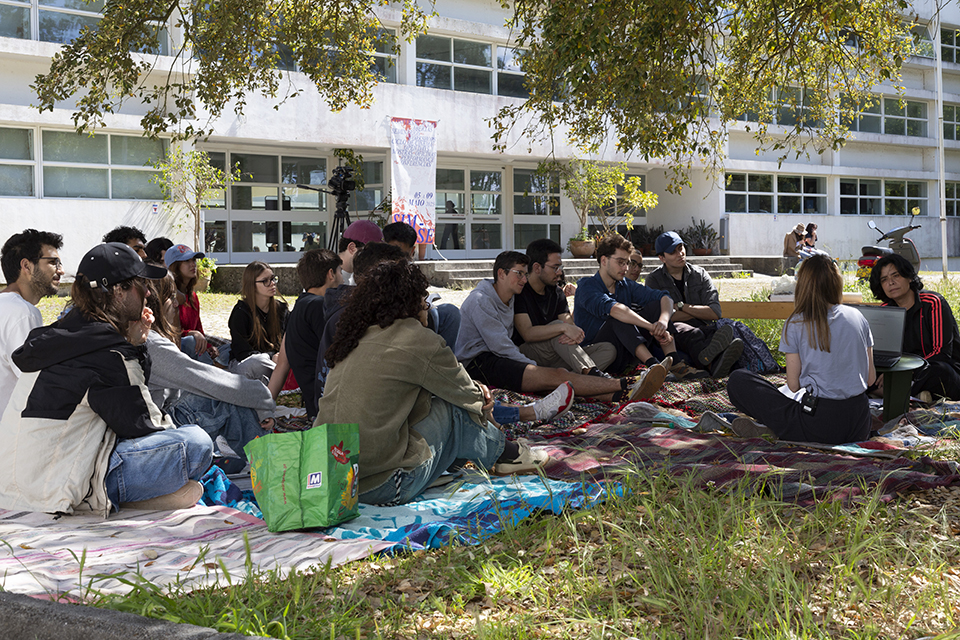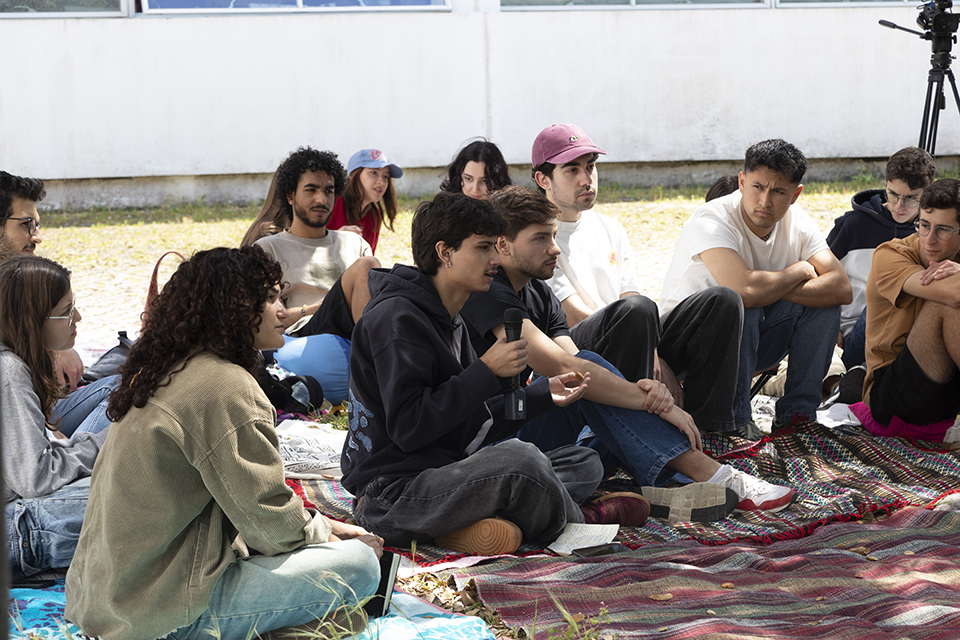

Plural Futures II: situated practices
Rute Carreira
SEMINAR
MAY 12TH OF 2025, 3PM
MAIN ENTRANCE OF ESAD.CR EP1
The Seminar Course Unit of the BA in Industrial Design at ESAD.CR returns with a new cycle of encounters under the theme Plural Futures: situated practices. This year, we welcome guest speakers with trajectories rooted in specific places, communities, and ecologies — all with ties to the school — to reflect on design as a contextual, critical and socially engaged practice.
From social relations to collections, immersive residencies and living organisms, each seminar will be a moment of listening and dialogue with projects that do not fit conventional formats, offering alternative ways of living, thinking and designing the world.
Rute Carreira
Rute Carreira holds a degree in Industrial Design from the School of Arts and Design in Caldas da Rainha (ESAD.CR), where she also completed her Master’s in Product Design.
During her academic path, she had the opportunity to combine her Master’s studies with a research scholarship in the project HomeGreens: domestic aquaponics, developed at the Design and Arts Research Lab (LIDA) at ESAD.CR. This project focused on the development of domestic aquaponics systems with a strong pedagogical component, promoting environmental literacy among children and young people. Later, she returned to collaborate as a research fellow in the project Limo do Cais – Exploration of Endogenous Resources of São Martinho do Porto, aimed at developing products from two macroalgae: Gelidium corneum and Asparagopsis armata.
This trajectory outlined a path of action in border zones, exploring intersections between Product Design and Biotechnology, oriented towards sustainability. To consolidate this knowledge, she is currently enrolled in the Doctoral Program at the University of Aveiro, maintaining her collaboration with LIDA.
PS: the introduction can be adapted to fit the publication formatMicroalgae in Design: Biological Devices for Air Quality
Her research* focuses on the development of bioactive platforms for the growth of microalgae, with the aim of improving air quality in indoor environments and contributing to the well-being of their occupants. This process is based on an interdisciplinary approach between design and biotechnology, starting from the premise that design can act as an active mediator between technology and nature, by proposing symbiotic solutions between humans and photosynthetic organisms.
By integrating the biological needs of microalgae with human requirements and technological constraints, the literature points to the capacity of these systems to capture CO₂ and remove airborne contaminants such as volatile organic compounds (VOCs) and formaldehyde, while promoting O₂ production. In indoor settings, the CO₂ emitted by humans feeds the growth of microalgae, which in turn contributes to air renewal, making the reciprocal relationship visible.
The system thus proposes a mediation between the natural and artificial worlds, providing a synesthetic experience through interaction with the biological process, via colour variation, sedimentation, and the texture of the microalgae as they respond to environmental conditions. This dynamic is close to the philosophies of biophilic design, recognising the psychological and physiological benefits of the presence of living organisms in human spaces.
Bring a mat, picnic blanket or cushion to sit on — it will be on the floor, with comfort and conversation.
Come and think about more plural futures with us.




